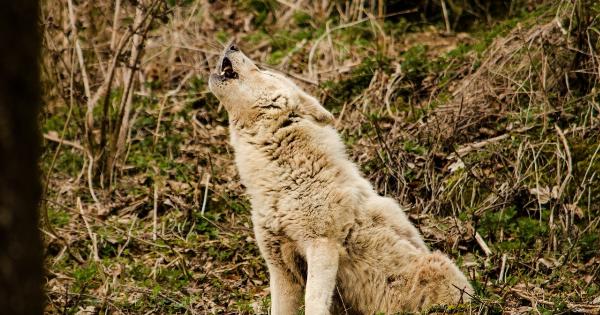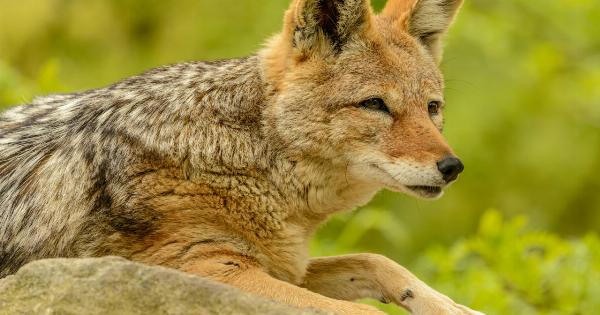The lion is known for its excellent vision, which plays a crucial role in its hunting abilities. With their large eyes and sharp focus, lions have the advantage of spotting their prey from a distance.
Their peripheral vision allows them to have a wide view of their surroundings, ensuring that no potential threats or competitors go unnoticed.
The Sound of a Lion
Lions are not only visually alert but also have a powerful sense of hearing. Their ears are designed to detect the slightest of sounds, even from miles away.
This acute sense of hearing helps them locate prey, communicate with other members of their group, and stay aware of any lurking dangers.
The Smell of a Lion
One of the most remarkable senses possessed by lions is their sense of smell. Lions have an olfactory system that is far superior to that of humans.
They can detect scents from miles away and use this ability to track their prey, find potential mates, and mark their territory. Their highly sensitive noses allow them to identify other animals’ presence and determine if they are friend or foe.
The Taste of a Lion
While the taste may not initially appear to be a crucial sense for a lion, it plays a significant role in their survival. Lions use their taste buds to differentiate between different types of food and determine if it is suitable for consumption.
This ability helps them to avoid consuming toxic or spoiled prey, ensuring that they remain healthy and strong.
The Touch of a Lion
Though not as prominent as the other senses, the sense of touch is still vital for a lion’s survival. Lions use their whiskers, located around their mouth and chin, to sense vibrations in the air.
This enables them to navigate their surroundings and helps with precise movements during hunting, especially when stalking prey in tall grasses or dense vegetation.
The Importance of the Five Senses for a Lion
The combination of the lion’s incredible sight, hearing, smell, taste, and touch grants them a complete sensory package that makes them one of the most powerful predators in the animal kingdom.
These senses work together to ensure their survival in challenging environments.
Lion Sight vs. Prey
When it comes to sight, lions have an advantage over their prey. Their ability to see clearly during both day and night is a significant factor in their hunting success.
Lions have larger pupils than humans, allowing more light to enter their eyes, resulting in enhanced night vision. This gives them the upper hand when hunting in low light conditions.
Lion Hearing vs. Prey
Lions possess acute hearing, making them extremely adept at detecting sounds. This ability is particularly critical for lions as they rely on communication with other pride members for coordination during hunts.
They can communicate through roars, growls, or even soft purrs, ensuring effective cooperation and increasing their chances of capturing prey. Furthermore, their exceptional hearing allows them to hear prey movements or distress calls from a distance, enabling them to plan their attack strategically.
Lion Smell vs. Prey
Compared to their prey, lions have a highly developed sense of smell. This superior olfactory ability assists them in locating potential prey, even when it is hidden or camouflaged.
Lions mark their territories with their scent, creating a reliable network of information about other animals moving through the area. By picking up the scent of nearby prey, they can determine whether it is suitable for hunting or if it belongs to another predator, allowing them to avoid unnecessary risks.
Lion Taste vs. Prey
The lion’s sense of taste is vital for their survival. While lions are carnivores and their food preferences are relatively limited, the sense of taste helps them discern between safe and potentially harmful prey.
Their taste buds allow them to identify whether the prey is fresh, rotten, or contaminated, minimizing the risk of consuming spoiled food that could cause illness or discomfort.
Lion Touch vs. Prey
The sense of touch may not be the primary sense lions use for hunting, but it still plays a role in their hunting success. Lions have sensitive whiskers that help them detect subtle movements in the air or the presence of obstacles while on the prowl.
These whiskers allow them to navigate their environment smoothly, even when visibility is limited. These tactile sensations also enhance their overall spatial awareness and coordination, ensuring precise movements during the critical moments of a hunt.
The Lion’s Senses in Perfect Harmony
Each of the lion’s senses is effective on its own, but when combined, they create a formidable predator.
The sight, sound, smell, taste, and touch work together to provide a comprehensive understanding of the environment, making the lion one of the most powerful hunters in the animal kingdom. Their senses allow them to identify prey, track it down, and overcome any potential challenges along the way.
The Evolutionary Adaptations of Lion Senses
Over time, lions have evolved to develop these remarkable senses, allowing them to adapt to various habitats and survive in the wild.
These adaptations have enabled them to become apex predators capable of thriving in diverse ecosystems, from the savannahs of Africa to the dense forests of Asia.
Conclusion
The lion’s extraordinary senses of sight, hearing, smell, taste, and touch collectively contribute to its status as a powerful predator.
Its senses allow it to excel as a hunter, communicate effectively within its pride, and navigate its environment. These senses have evolved over time, enabling lions to survive and reign at the top of the food chain.






























